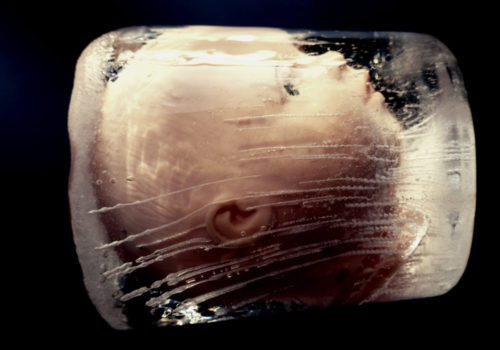Haud Plaquette-Méline uses photographic images to verbalise her love of the body, her propensity for controversy, her exacerbated sensitivity. The clichés pass as quickly as they challenge, surprise, question. Photography remains a way for the artist to go beyond the everyday silence, to be liberated from the struggles and to reveal the unspeakable, in analogue, Polaroid or digital.
You photograph reality or fiction?
It’s a projection of reality, fantasy or not, that I have in the viewfinder.
The principal quality of a photograph?
The ballistic precision into the spectator’s mind.
Its principal fault?
Its durability.
The period you would have liked to photograph?
That of A Clockwork Orange, the 1970s.
What inspires you?
Taboos, personal and social misery, to take the opposing view .
What reactions in the spectator are you trying to provoke?
Freeze frame, the dilemma between the eye and consciousness.
The photographer you would most like to meet?
Without any hesitation, Newton. I’m fascinated by the way he pushed back the frontiers, by the penetrating black in his prints, less so by his Polaroids.
The principal characteristic of the human being?
We are no longer human beings but people with hints of humanity, with some wisps of altruism.
Your materials?
A Leica R4 with a hand-written sticker from an unknown grandfather, a Polaroid EE100 for Fuji black and white whose production is finished, a collection of Pola and a tropicalized Olympus E5 that is gathering dust.
Interview par Corridor Éléphant
http://www.haudplaquette-meline.com
CORRIDOR ÉLÉPHANT was founded in 2012 by a group of a dozen people (photographers, journalists, authors, artists). This online magazine, like the quarterly paper NIEPCEBOOK born at the end of 2015, has as its objective showing and promoting contemporary photography, that which testifies to our present, that which is hardly shown, little or not published despite its quality whatever its origin in the world. Since 2016 CORRIDOR ÉLÉPHANT has also been a small publishing house dedicated to contemporary photography. It publishes books in participatory limited editions, numbered and signed by their authors.
















